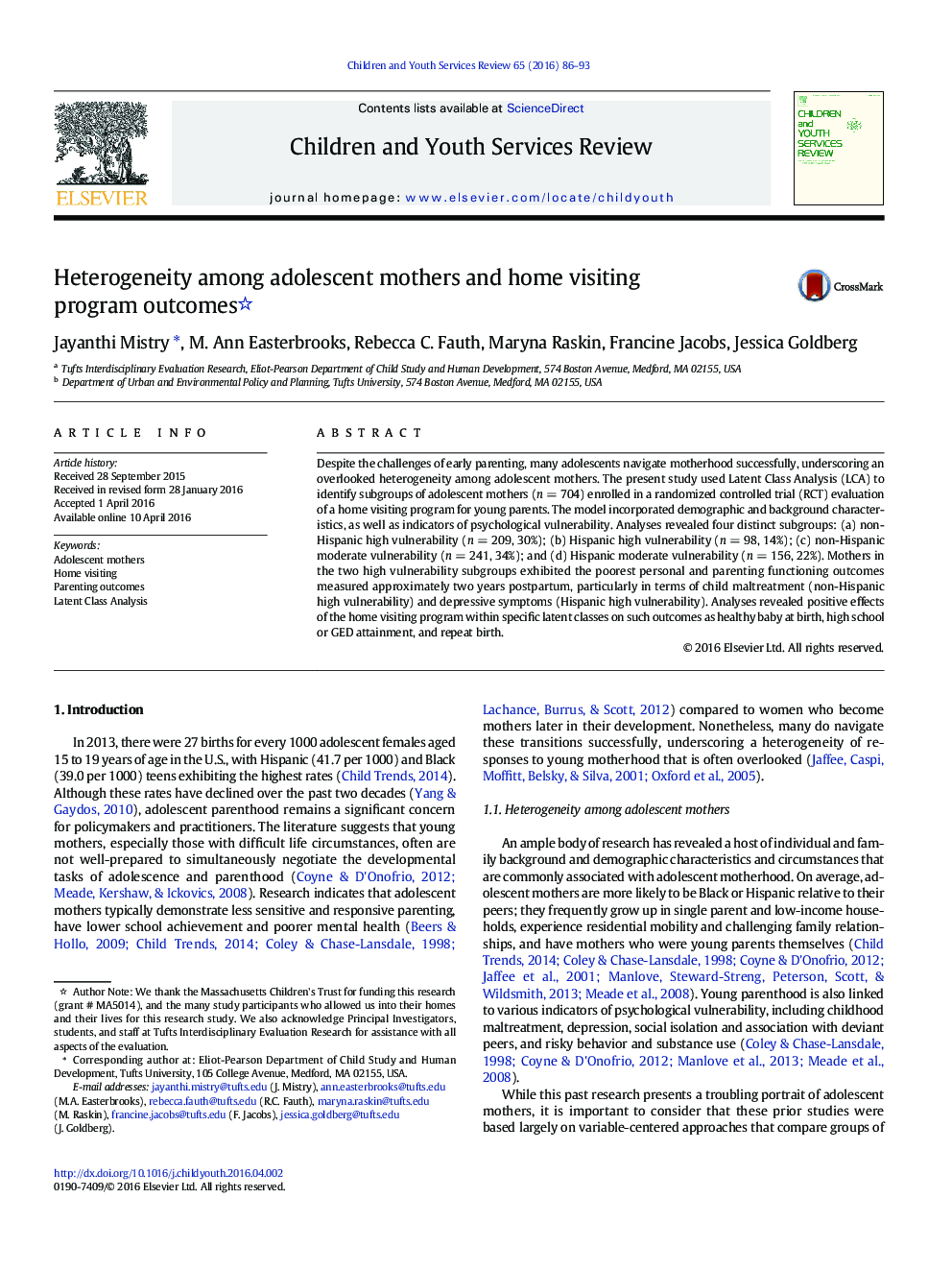| Article ID | Journal | Published Year | Pages | File Type |
|---|---|---|---|---|
| 345810 | Children and Youth Services Review | 2016 | 8 Pages |
•Four subgroups of adolescent mothers identified through Latent Class Analysis•Groups were differentiated by ethnicity, nativity, and psychological vulnerability.•High vulnerability groups exhibited low personal and parenting functioning.•Differential home visiting program effects observed for subgroups•Favorable program effect on healthy birth observed for high vulnerability subgroups
Despite the challenges of early parenting, many adolescents navigate motherhood successfully, underscoring an overlooked heterogeneity among adolescent mothers. The present study used Latent Class Analysis (LCA) to identify subgroups of adolescent mothers (n = 704) enrolled in a randomized controlled trial (RCT) evaluation of a home visiting program for young parents. The model incorporated demographic and background characteristics, as well as indicators of psychological vulnerability. Analyses revealed four distinct subgroups: (a) non-Hispanic high vulnerability (n = 209, 30%); (b) Hispanic high vulnerability (n = 98, 14%); (c) non-Hispanic moderate vulnerability (n = 241, 34%); and (d) Hispanic moderate vulnerability (n = 156, 22%). Mothers in the two high vulnerability subgroups exhibited the poorest personal and parenting functioning outcomes measured approximately two years postpartum, particularly in terms of child maltreatment (non-Hispanic high vulnerability) and depressive symptoms (Hispanic high vulnerability). Analyses revealed positive effects of the home visiting program within specific latent classes on such outcomes as healthy baby at birth, high school or GED attainment, and repeat birth.
